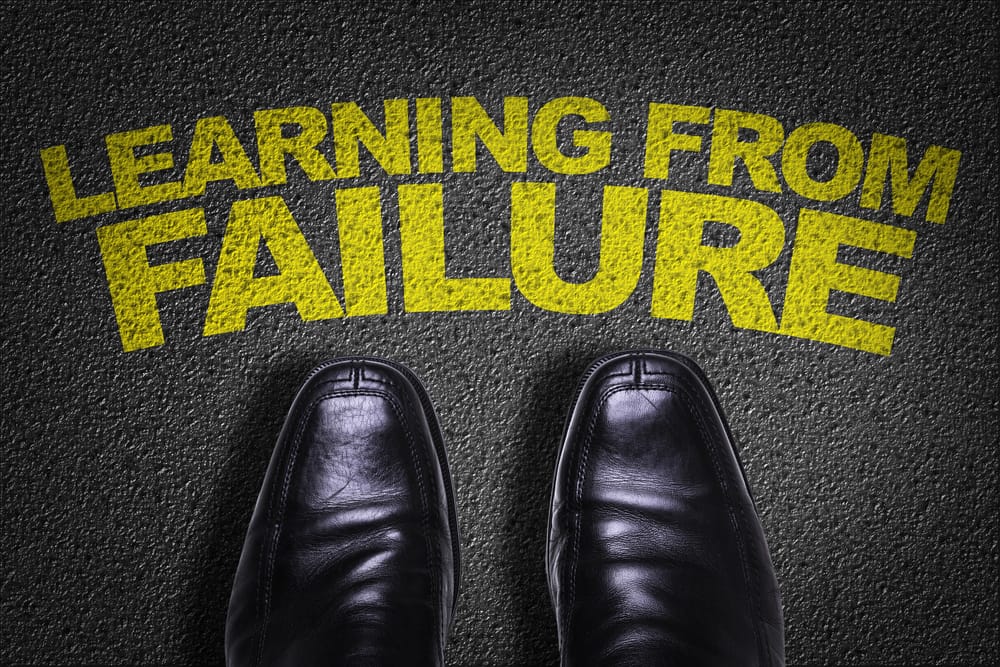CXOs, innovation doesn’t guarantee leadership. In fact, many companies innovating aggressively are quietly losing market share—not because of poor ideas, but because they lack the leadership infrastructure to deliver them at scale.
Execution is what separates visionary firms from industry leaders. And execution, at its highest level, depends on having the right CEO, a forward-looking Board, and succession strategies that anticipate—not react to—change.
When markets shift, the companies that sustain dominance aren’t those with the best technology. They’re the ones with the best leadership continuity, the deepest CXO bench, and the closest relationships with the executive search partners who understand their DNA.
“Innovation without leadership is potential without power.”
Innovation Without Execution: Why Strategy Still Needs the Right CEO
Strategy is only as effective as the leader responsible for carrying it forward. An ambitious innovation roadmap can stall instantly without a CEO who understands timing, talent, and capital strategy. In high-growth and transition-phase companies, that disconnect is common—and costly.
Too often, Boards conflate industry familiarity with execution capability. But market leadership today demands more than domain knowledge. It requires CEOs and Presidents who can translate technical ambition into commercial traction, often across regulatory, geographic, and organizational complexity. Manufacturing cybersecurity is no longer a compliance checkbox—it’s a revenue enabler and board-level priority.
When companies treat CEO recruiting as reactive, they compromise the very innovation they hope to deliver. By contrast, firms that build long-term relationships with retained recruiters ensure a continuous flow of strategically aligned leadership talent. These firms don’t wait until they need a leader—they build a succession-ready talent pool in advance.
This isn’t a theory. It’s practice—quietly shaping the outcomes of companies outperforming peers by 15–20% YoY.
“Leadership is the interface between strategy and success.”
Succession Planning as a Driver of Innovation Readiness
When innovation is core to your business model, succession can’t be an afterthought. The departure of a single leader—whether a CXO, R&D head, or technical founder—can ripple across the organization, freeze key initiatives, or compromise investor confidence.
Boards and Chairpersons must view succession as a performance asset, not an emergency protocol. In innovation-led organizations, succession ensures strategic continuity, reduces key-person risk, and empowers teams to execute without hesitation. It allows companies to act—not react—when transition becomes inevitable.
Firms that embed succession logic into their annual strategic review are better positioned to navigate volatility. They treat leadership continuity as part of enterprise risk management—and a prerequisite for innovation resilience.
For these firms, executive search partners aren’t just talent scouts—they’re architects of continuity. Retained recruiters work in lockstep with governance teams to identify successors months or years in advance, ensuring minimal disruption when leadership evolves. How to easily measure Search firms: What is their Replacement Guarantee length?
“Innovation is dynamic. So is succession. Treat both as core to your competitive advantage.”
Why Chairpersons and Boards Should Diversify Their Executive Search Partners
Executive recruiting isn’t a commodity—it’s a strategy. Yet many Boards and Chairpersons remain overly dependent on a single search firm, often chosen years ago and rarely reassessed. This creates blind spots, slows search performance, and weakens succession optionality.
Diversifying executive search partnerships broadens access to top-tier passive candidates, increases visibility into cross-industry talent, and minimizes overfamiliarity bias. Especially in high-stakes CEO or CXO searches, having multiple trusted partners brings sharper market insight, stronger candidate calibration, and more robust results. When IoT touches customer experience and revenue streams, leadership must match product innovation with market execution.
In innovation-intensive sectors, timing is critical. A missed hire can delay a product launch or derail a funding milestone. Having layered search relationships helps mitigate these risks by increasing responsiveness and reducing dependency on a single recruiting pipeline.
Boards that treat executive search partnerships as strategic capital—not transactional vendors—gain the intelligence, access, and flexibility required to lead in dynamic markets.
“Innovation demands optionality. That includes your recruiting relationships.”
Retained Recruiters Are Not Vendors—They’re Strategic Assets
There’s a clear difference between vendors and partners. Retained recruiters operate as embedded intelligence: assessing succession depth, stress-testing organizational design, and curating long-term candidate pipelines that evolve with your business.
These relationships allow recruiters to function as advisors—guiding Boards through complex succession conversations, benchmarking leadership against market trends, and spotting gaps before they become emergencies. In sectors where growth is nonlinear, and innovation is constant, that insight is irreplaceable.
A true search partner doesn’t just fill roles. They help Boards and CEOs navigate ambiguity. They manage delicate transitions with discretion. They challenge assumptions when necessary—and protect leadership capital through alignment, not just access.
Companies that build strategic recruiter relationships outperform those who cycle through vendors based solely on price or speed. In executive hiring, the cost of a misfire always outweighs the investment in a trusted partner.
“In high-impact recruiting, trust is the multiplier.”
Building a CXO Bench That Supports Innovation at Scale
Innovation doesn’t just require vision—it requires infrastructure. That includes a scalable, strategically aligned CXO bench prepared to lead across product life cycles, market expansion, and operational transformation. In many organizations, this leadership bench is dangerously thin.
The problem isn’t just about talent—it’s about succession depth. When the only viable successor to a CTO or Chief Commercial Officer is an external search, agility suffers. Executive recruiting should be structured not around vacancies, but around anticipated capability needs. This proactive model allows companies to recruit for adaptability and velocity—not simply replacement.
Boards that prioritize capability mapping, future-role modeling, and recruiter-aligned pipelines build resilience into their innovation model. A clear executive search strategy ensures every critical function—technology, operations, revenue—is underpinned by a leader who can drive innovation, scale it, and sustain it.
Innovation is scale-dependent. Scale is leadership-dependent.
“In modern organizations, your bench is your runway.”
Executive Search in a Shifting Market: What the Data Signals
Labor markets don’t just respond to economic shifts—they forecast them. In the retained search world, recruiters see leading indicators long before public earnings or analyst revisions. Leadership churn, title shifts, and compensation trends reveal where growth is accelerating—and where risk is creeping in.
Boards and Chairpersons working closely with search partners gain access to these signals in real time. That intelligence shapes better capital planning, faster succession execution, and more confident decision-making.
For example, a surge in CEO-level recruiting across AI/IoT portfolios may suggest a boardroom-level recalibration toward execution and monetization. A drop in VP-level movement might signal caution in middle-market scaling. These are not just anecdotes—they’re actionable insights.
Trusted recruiters aren’t just search partners. They’re strategic lenses through which your organization can read the market in advance.
“Talent flow is the new market indicator.”
Recruiter Intelligence: A Competitive Advantage for High-Performing Boards
The most effective Boards today are intelligence-driven. They don’t rely solely on consultants or investor briefings—they tap into executive recruiters for real-time feedback on leadership market dynamics, competitor moves, and emerging talent pools.
Search firms embedded in your sector know which CXOs are quietly open to new roles, which companies are reshaping leadership models, and how skill sets are evolving across verticals. That knowledge empowers Boards and CEOs to act—not react—when disruption or opportunity presents itself.
Beyond active searches, leading recruiters advise on:
- Interim leadership planning
- Succession scenario modeling
- Organizational structure design
- Diversity mapping at the executive tier
These services are often underutilized because companies frame executive search as a hiring solution, rather than a strategic function. Those that shift that mindset gain ongoing, compounding value from the partnership.
“In high-stakes governance, visibility is the advantage. Recruiter intelligence delivers it.”
Innovation Isn’t Just Product—It’s Leadership
When analysts talk about innovation, they focus on R&D budgets, patents, and pipelines. But inside the boardroom, the real determinant of innovation success is leadership. Products don’t go to market. People take them there.
High-performing companies understand that innovation requires more than vision—it requires sustained execution, cross-functional alignment, and cultural momentum. These factors are not random. They are led.
Boards that invest in executive search, deepen relationships with retained recruiters, and treat succession as strategy—not contingency—outperform their peers in both growth and resilience.
Innovation doesn’t just flow from engineering. It flows from leadership alignment.
“Leadership is the engine. Innovation is the output.”
About NextGen Global Executive Search
NextGen Global Executive Search is a retained firm focused on elite executive placements for VC-backed, PE-owned, growth-stage companies and SMEs in complex sectors such as MedTech, IoT, Power Electronics, Robotics, Defense and Photonics. With deep industry relationships, succession planning expertise and a performance-first approach to recruiting, NextGen not only offers an industry-leading replacement guarantee, they also help CEOs and Boards future-proof their leadership teams for long-term success.



















